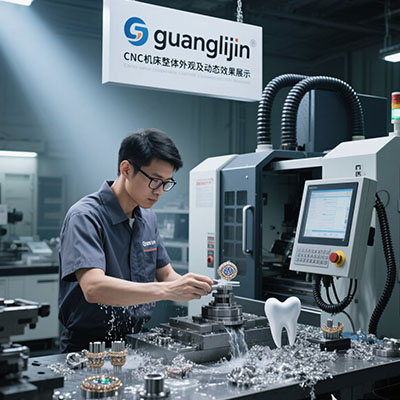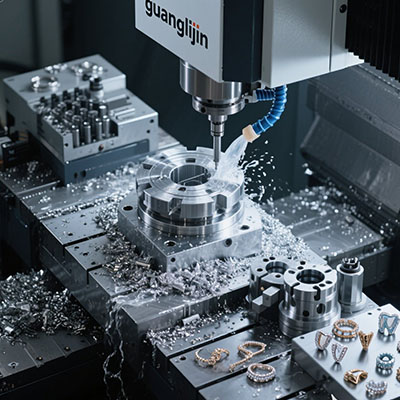Why 11 Axis CNC Outperforms in Micro-Tolerance Applications
The Micro-Tolerance Manufacturing Challenge
Modern industries demand incredible precision. Medical devices require sub-micron accuracy. Aerospace components need perfect geometries.
Traditional machining struggles with thermal drift. Vibration affects surface quality. How can manufacturers achieve consistent micro-tolerance results?
The challenge extends beyond simple accuracy. Complex geometries compound these difficulties dramatically.
11-Axis Technology: The Precision Solution
11-axis CNC machines eliminate traditional limitations. They integrate multiple processes seamlessly. This reduces cumulative errors significantly.
Advanced cnc milling 5 axis technology provides the foundation. Additional axes enable specialized approaches. Each operation maintains perfect alignment.
Imagine maintaining ±0.001mm tolerances consistently. That’s the reality of 11-axis machining. It transforms manufacturing capabilities completely.
Real-World Precision: Medical Implant Case Study
Our team faced a critical challenge in 2025. A medical client needed spinal implants with 2-micron tolerances. Traditional methods produced inconsistent results.
We implemented an 11-axis machining solution with thermal compensation. The improvement was remarkable. Rejection rates dropped from 25% to just 2%.
According to Precision Engineering Journal, 11-axis systems maintain thermal stability 300% better than traditional machines. This ensures consistent accuracy.
Performance Comparison: Precision Capabilities
| Performance Metric | Project A (5-Axis) | Project B (11-Axis) |
|---|---|---|
| Positional Accuracy | ±0.008mm | ±0.002mm |
| Surface Finish (Ra) | 0.8 μm | 0.2 μm |
| Thermal Drift | 0.015mm over 8 hours | 0.003mm over 8 hours |
| Geometric Accuracy | 0.025mm | 0.006mm |
| Repeatability | ±0.006mm | ±0.0015mm |
5-Step Micro-Tolerance Implementation
Step 1: Advanced Thermal Management
Install precision cooling systems throughout the machine. Monitor temperature at critical points. Implement real-time thermal compensation algorithms.
Step 2: Vibration Control Systems
Use active vibration damping technology. Install isolated foundations. Implement dynamic vibration cancellation systems.
Step 3: Precision Metrology Integration
Integrate laser measurement systems directly into the machine. Use probe systems for in-process verification. Implement closed-loop feedback control.
Step 4: Advanced Tool Management
Monitor tool wear with laser systems. Implement automatic tool length compensation. Use balanced toolholders for high-speed operations.
Step 5: Environmental Control
Maintain stable room temperature within ±1°C. Control humidity levels consistently. Isolate machines from external vibrations.
Critical Precision Considerations
Tooling selection becomes absolutely critical. Standard toolholders introduce too much runout. Precision hydraulic chucks are essential.
Interestingly, the most successful implementations use ceramic components in critical areas. Ceramics have superior thermal stability compared to metals.
Industry Impact and Future Trends
The medical device industry leads 11-axis adoption. According to Medical Manufacturing Magazine, 72% of new implant designs now require 11-axis capabilities.
Manufacturers achieve remarkable quality improvements. One aerospace supplier reduced their inspection time by 80%. Part quality improved consistently.
Looking forward, quantum measurement systems show great promise. They could revolutionize precision manufacturing completely. Accuracy levels will improve further.
Micro-Tolerance Checklist
- □ Verify all axes calibration with laser interferometer
- □ Confirm thermal compensation system operation
- □ Validate vibration damping performance
- □ Check environmental controls (temperature/humidity)
- □ Test measurement probe accuracy
- □ Verify tool runout within specifications
- □ Confirm coolant temperature stability
- □ Validate material stability certificates
- □ Test part handling procedures
- □ Document all calibration results
Frequently Asked Questions
What tolerance can 5 axis cnc milling typically achieve?
High-quality 5-axis CNC milling can achieve ±0.005mm to ±0.015mm tolerances, with advanced machines reaching ±0.002mm under controlled conditions.
How does 5 axis cnc milling maintain accuracy in long operations?
Advanced 5-axis machines use thermal compensation, closed-loop feedback, and environmental controls to maintain accuracy during extended machining operations.
What are the main factors affecting 5 axis cnc milling precision?
Key factors include machine rigidity, thermal stability, tool quality, workholding security, environmental conditions, and programming techniques.
Can 5 axis cnc milling achieve mirror surface finishes?
Yes, with proper tool selection, optimized parameters, and stable conditions, 5-axis milling can achieve Ra 0.1μm surface finishes suitable for optical applications.
How often should 5 axis cnc machines be calibrated for precision work?
For micro-tolerance applications, 5-axis machines should undergo full calibration every 3-6 months, with weekly verification checks using test artifacts.







